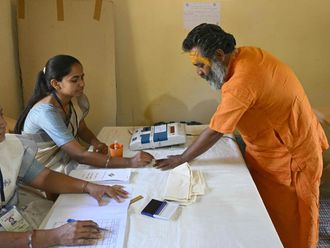Kolkata: Picture this: A bird strikes an aircraft and all that is left is a mass of feathers. What can you do to identify the vulnerable species, save it and ensure safe air travel at the same time? Zooming in on unique genetic labels through DNA bar coding could be the key, say Indian researchers.
“Identification of bird species helps in understanding the behaviour of birds in terms of its habitat, diet and the like. This data helps in the management of birds for air safety management and could lower bird strikes,” Yogesh Shouche, a senior scientist at Microbial Culture Collection (MCC), National Centre for Cell Science (NCCS), Pune, said.
Just as shopkeepers scan the similar-yet-different zebra stripes (bar codes) on products to keep track of what they sell and what is in stock, examining certain ubiquitous genetic sequences can differentiate one species from another with high accuracy.
For bird strikes, extreme accuracy is needed since the impact destroys the bodies beyond recognition and few remnants are left to work with. Here comes DNA barcoding’s precision from a pinhead size sample.
Using this, a DNA bar code database could be built for Indian birds, according to Shouche.
“A database of DNA bar codes is generated using authenticated, well identified bird samples. This helps in easy and quick identification of remnants obtained after a bird strike. These are in the form of feathers, bloodstains and the like and accurate identification using this is not possible otherwise.
“Currently we do not have any such database in India, but there are global databases which may not have entries of bird species endemic to India,” he added.
According to the Directorate General of Civil Aviation (India’s aviation safety regulator), from 378 bird strikes recorded in 2010, incidents of collisions between birds and planes increased to 719 in 2014.
Bird strikes not only result in financial losses, they also lower mission capability of the crew, loss of flying hours, permanent damage to the aircraft and, importantly, are always associated with the risk of mortality, the researcher stressed.
Shouche and his colleagues analysed 52 bird-strike samples received from the Indian Navy from 2011 to 2014.
“We identified 16 different species and barn owl and red wattled lapwing were the most common species found, probably because they nest on buildings and due to grassy land near airstrips, food availability is better,” he explained.
The procedure also helped the researchers in detecting non-bird species: they found three bat species in the bird strike samples.
“Identification of birds involved in strikes was not a regular practice in India. It was done at some airports like Mumbai and Bengaluru by people with expertise in bird identification using morphological means [from form and structure].
“However, such identification is difficult if the body of the bird is not found. Feathers give limited identification and if there are only bloodstains, no identification is possible. Hence bar coding has advantage,” Shouche added.
The research was published in a recent Current Science article.












